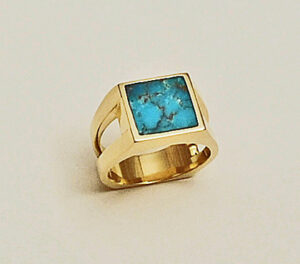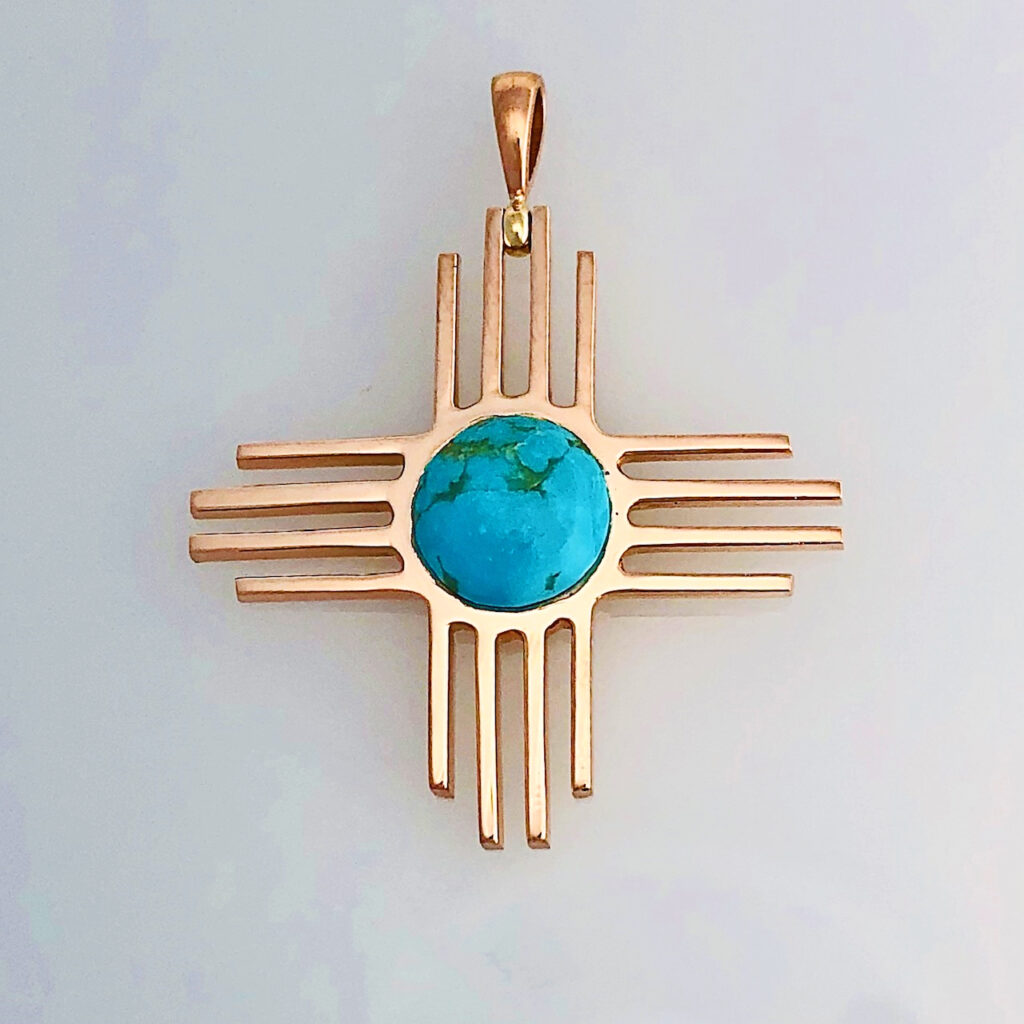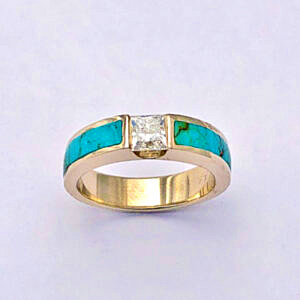Most people are not aware of the fact that natural deposits of turquoise coming from mines cannot normally be used to cut into finished gemstones or be used in custom design jewelry. Most turquoise must be treated before in can be used to manufacture jewelry. Turquoise is treated to enhance its color & salability, make it strong enough to be used in custom jewelry and durable enough so it can be cut.
Turquoise that is not treated is very uncommon. Rough turquoise that has been cut into gemstones and turned into jewelry are extremely unique and considered to be special my plenty of admirers. Raw turquoise is difficult to locate and the demand for it is high by a large amount of people for a wide selection of facts and personal desires.
The various forms of the mineral turquoise, created by specific treatments, are explained as follows.
Natural Untreated Turquoise
The title for turquoise that has not been treated that is made into different materials that include beads, cabochons to name a couple is natural untreated turquoise. This type of turquoise is extremely well liked, particularly if it is stunning color. This type of turquoise can be found retail stores whose primary product line is fine custom turquoise jewelry or stores that specialize in natural untreated gemstones. Stores whose main products are untreated natural gemstones feature this fact as reason to come in, shop and buy there.
Stabilized Turquoise
Turquoise that has been treated with a binding material or polymer to make it strong and stable for custom jewelry manufacturing is known as stabilized turquoise. Natural turquoise found in mining deposits is not useable in jewelry. It is far too unstable, easily breakable, permeable, and weak to use in manufacturing jewelry. This type of turquoise is the most available and regular turquoise material for sale in the gemstone and jewelry business. It is the recognized standard for turquoise material and gemstones today due to the fact the supply of this product is less than the demand for it. Turquoise that is for sale that is stabilized must be disclosed to all buyers before any purchase is made. Untreated turquoise prices are higher than stabilized turquoise.
Composite or Reconstituted Turquoise
This type of turquoise comes from a selection of small turquoise pieces combined with a chemical polymer and cast manufactured into blocks. Occasionally these blocks are made with both tiny turquoise pieces and non-turquoise material. The blocks are cut down to smaller blocks and then cut into various pieces for jewelry manufacturing including beads and cabochons. The common name for these pieces is “block turquoise” which comes from how the pieces are made. Normally turquoise dealers specializing in a product line of natural gemstones will not offer block turquoise pieces made from reconstituted or composite turquoise. This type of turquoise is often named or titled “man-made turquoise products”. However, several dealers offer natural stabilized turquoise materials for jewelry manufacturing and they will sell a line of man-made turquoise products because it gives the ability sell both product lines featuring both high price points and lower price points.
Dyed Turquoise
Turquoise can be dyed because of its natural ability to absorb liquid. Dye is employed to change the color of turquoise to make it more attractive color which in turn makes it easier to sell. Dye can be applied to turquoise to make into amazingly bright colors. The turquoise that is dyed the most often is reconstituted and composite turquoise. Dye can be employed to change the color of the polymer used to bind tiny turquoise into composite turquoise or to color the turquoise itself before it is made reconstituted or composite turquoise. When the polymer color is dyed there are times when the color used is brown or black to make the look of the composite jump out or to make it have a more consistent look. Please know that untreated turquoise is consistently worth more than dyed turquoise.



